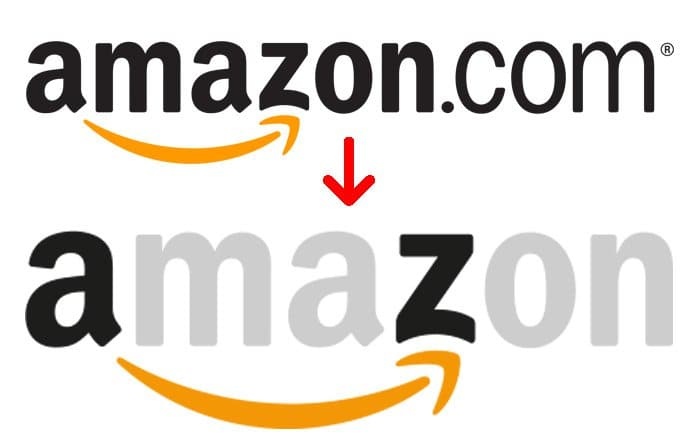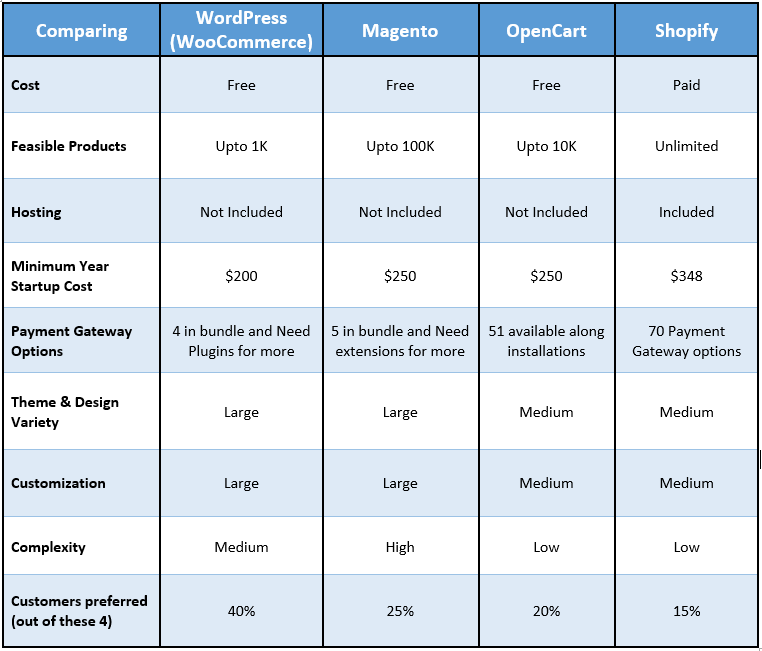 Back to all articles
Back to all articles
Blogs
A Guide To Run An eCommerce Business


If you think this is the right time for you to learn eCommerce business from scratch, then you’re certainly at the right place!
The eCommerce business industry today as we speak is exploding. Shopping online used to be a convenience and a luxury, but now – it’s a necessity. The eCommerce has been growing rapidly for a while, and the growing numbers are not stopping any time soon.
While it’s great to embark on your new eCommerce business with lots of big ideas, it’s good to focus on the most practical steps of your eCommerce business plan first. For starters, where you need to begin.
To serve the purpose, this guide will give you a roadmap to getting from 0 to a fully functional eCommerce business. Together, we go step-by-step through the entire process to start an eCommerce business and make everything as straightforward as possible.
If you think you need assistance anywhere between any step, you can choose to seek professional advice here, and then you can sit back and relax while they bring finesse to their work.
Pick Your Ecommerce Business Niche
when you plan to start an eCommerce business from scratch, the possibilities are truly endless.
Many individuals are selling all sorts of different things online and do it in all sorts of different niches and markets. And the best thing about this is that they are growing. Quite frankly, these days everyone and their dog is doing shopping online!
To make your eCommerce business successful, a good place to start is deciding what you want to sell, roughly—just to speak in broad terms for now.

What Your Ecommerce Business Can Sell
Mainly, you will come across four main kinds of things eCommerce businesses sell:
- shippable, physical goods
- digital goods (eBooks and written work, downloads, software, apps, multimedia)
- services
- courses, subscriptions, and other memberships
And the greatest thing about eCommerce technologies of today is—you can effectively sell either one of these or even all at the same time.
Included to this, you will also be needed to decide whether you want to:
- go retail or wholesale
- offer your products locally, nation-wide, or even internationally
This, for now, may look like a lot of thinking, but you need to be clear of your preferences and use them to make future decisions.
Understand And Pick Your Niche
Your niche will decide your place in the market. It is the defined set of people who are potentially your target customers who are willing to buy what you’re selling.
A pro tip here is that if you fail to validate a prospective niche through research, then you shouldn’t risk going into it and expecting good returns. Always think about the people first when looking for your niche. You need to look for individuals interested in buying from you.
If you are one of those few who have a general idea as to what sort of market they want to tackle, maybe you can narrow down your ideal customer base with the help of a few tools. Otherwise, professionals are there to help you and share their expert skill-set to let you seal the deal.
After you have successfully found a niche that also has other businesses catering to it and looks like something that could work for you, proceed to the next step of the research.
What Products You Plan To Sell
Now let’s narrow down the research on the exact products you can offer based on their sales potential in the niche.
The key is to understand your customers, their needs, and desires better.
Let’s figure that out.
Knowing your competition
Remember, the mere presence of competition is an excellent sign for new eCommerce businesses – contrary to what many people might believe.
Through competition, you can validate the market and it also ensures that there’s money to be made in the niche.
Know your direct competitors who are doing business in the same niche using similar products and observe their approaches.
The goal here is not to piggyback off your competition and do exactly what they are doing. Instead, you’re going to take advantage of the work they’ve put in to build their businesses, and try integrating some of their good practices into your business.
To do this you can take the help of many tools including SEMrush and SiteProfiler. Each of these tools will help you producing a report about your competitor’s website with things like top keywords, top content, social media metrics, best pages, audience demographics, top-selling products, and more.

This way you can also identify more websites and businesses in your niche.
Discovering what sells best
The next stage of your research will be to discover what sells best in the niche and consider offering similar products (or services).
The idea should not be about replicating your competition but to have a clearer insight into what is the hot product of the particular niche. With this manner, you will be able to figure out product ideas that are already very likely to resonate well with your customer base.
Scouring social media for insights
All paths—willingly or unwillingly lead to social media in 2020, undoubtedly.
The goal here is to find related groups and pages that your customer base follows. Join the same groups and pay attention to what’s trending there.
See the discussions people are getting themselves into, the products they talk about, the kinds of posts they engage with the most, and similar interests.

The way you can better understand what your actual customer base’s desires are and how engaged they are with the type of stuff you want to sell them.
Looking through online marketplaces
Many popular market places have sections for best-selling products in each niche including Amazon, AliExpress, BangGood, and others.
By the end of this research, you should have a list of products or services that you want to offer.
Incorporating A Business
The most common question that fears most of the people talking about an eCommerce business is, “Do I need to register my eCommerce business officially?”
Unfortunately, the only honest answer to this question is, it depends.
Mainly, it depends on what your local rules and regulations are, and what you’re allowed to do with and without an incorporated business.
Commonly, you’ll find that you can operate a business in a couple of ways:
- A form of the sole proprietorship.
- A form of a limited liability company (S and C corps in the US).
By having an incorporated business, the dealings with other companies and third-parties will become easier. In addition to that, applying for accounts with credit card processors, payment providers, working with suppliers, marketing partners, and so on won’t be a possibility until you have an officially incorporated business.
For all intents and purposes, this stage is mainly about getting the paperwork in line and making sure that you’re ready to start operating LEGALLY.
Branding And Naming Your Business
How companies Name their products:
Lots of startups get stuck on naming their businesses. Most entrepreneurs carefully name their businesses considering the relevance to the niche and the audience to target. However, visionaries opt more features to add while naming the business just like honoring some incidents or personalities or try to put their mission, history, stories, or efforts behind the name. A few prefer to maintain their legacy of previous brand names. Because in the end this all ends-up to create a charm in the market and brands get a fair advantage of readers while they read their content. Not limited to this, in modern times, SEO businesses get some citations based on their efforts behind the brands.
We have a few examples here:
- Tesla: Named after Nikola Tesla, a Serbian inventor who invented the first modern alternating current (AC) motor.
- Coca-Cola: Named on it’s two main ingredients Coca leaves and Cola berries.
- Intel: Short for integrated electronics.
- Amazon: Named after the biggest river in the world.
- Microsoft: A combination of the words Microcomputer and Software.
So one must add a feel to its name of the niche or product by using origin, ingredients, history, stories, or their struggle. Then it also depends on the geographical reach of the brand just like hundreds of thousands of Asian platforms can’t market themselves globally because of their un-understandable names. However; Alibaba picked a specific name that is readable in fact understandable to the rest of the world except China (until it was renowned). So one must pick an understandable name for their target market.

How to do Branding
Choosing colors: Naming & Branding is quite connected but one of the trickiest thing in the world of marketing. Every niche and domain demands it’s own feel just like companies use low tone & soft colors for babies' products. However, cars & bikes are most in hard colors as they are metallic. When it comes to food then most colors come from nature.
Designing a feel/logos: One must be careful while branding their identities to sustain the legacy in the future. Because once a brand is being recognized they can’t change their feel but keep on improving the feel. Changing a feel can disturb the mindset of their audience. A logo can consist of the name or slogan otherwise a feel to ensure the understandably of product. In short, it should have meaning.
Just like Amazon was named after river and logo says a2z with an arrow in it:

Toyota logo consists of its own name:

Ferrari’s symbol can be traced to the Italian fighter ace Francesco Baracca who painted the horse onto the fuselage of his plane. He recorded 34 kills and was killed in 1918, becoming a national hero:

After completing the naming & branding; companies proceed on designing their eCommerce portals with the next challenge of selecting the platform.
Which eCommerce platform is right for me?
By all means, developing something accurate & precise is the best out of available choices. Because we get what we want, to be honest, we get ONLY what we want. Currently, most of the eCommerce platforms provide almost major general features to design an eCommerce platform. Our experience says, not everyone needs everything but sometimes just 20% of what we need. To be honest, enterprises can afford custom development but startups with limited budgets do not prefer to go for custom development. They rather prefer to stick with WordPress, Magento, opencart, Shopify, or a few similar ones.
On the other hand sometimes not any platform provides all the features what one need for it’s eCommerce website. Then one must see which platform is more flexible to build all the demands. However for regular startup owners, here are few suggestions while selecting a platform:
WordPress is for Limited products, more philosophy and cost-effective:
Every eCommerce platform market itself as king of all attributes but in our experience we suggest our customers to go with WordPress if they have limited products and need better management of products. It’s true that it enhance their pain to operate the website as WordPress itself isn’t made for eCommerce sites but WooCommerce along few more plugins make sure it’s effectiveness. However; it’s a great tool for publishing the philosophy & information so owners get an advantage display the information in may different ways. There are also many free plugins available to enhance the functionality of shopping site in terms of social media publicity and configuring onsite sliders etc. One has to has it’s own hosting to configure WP store.
Magento is for high volume products, categories and made for eCommerce Businesses:
If one got huge inventory and requires multiple web services for vendors, shipping, billing and accounting then the only pre-build CMS is Magento. It’s made for eCommerce websites and provides countless features to run an online store effectively. There is a free and then an enterprise paid solution available for Magento to enhance the capacity of a store in terms of it’s technical utilization as well as users base. However; again one have it’s own hosting to configure Magento store. When it comes to a certain volume of buyers and users, it can be configured easily on cloud. Bear in mind; Magento is not limited to shopping carts but way beyond it as one can setup Affiliate marketing, drop shipping and vendors on a magento site.
opencart is for medium volume of products, categories and made for eCommerce shopping carts:
Well; to our experience opencart falls somewhere in between of WordPress and Magento as it’s primarily made for simple shopping carts, easy to configured but not as flexible as WordPress and as rich as Magento. For intermediate level of shopping carts it supports well and there is a sufficient paid / free themes and extensions available. One must have it’s own hosting to configure opencart and to run a store.
Shopify is a SaaS solution:
There are many startups who don’t bother to make their hands dirty with the code and servers but still prefer to DIY. Shopify is a perfect but limited solution for them. One can easily buy a required package for Shopify and setup their shop. It’s just a matter of time (as they pay a certain price). But when it comes to adding multiple web services or scalling that’s limited to an extent using Shopify. As it provides integrations but not with all platforms. Also moving products out of shopify is possible but sometimes a nightmare. There is a beautiful order & customer management module available on the backend to manage regular order processing mechanism.
Please find below a chart comparing on basic features can help to select one out of 4 discussed above:

If you are looking a trustworthy partner to make your appearance online and successful Contact us with your requirements.
Don't hire us right away
talk to our experts first,
Share your challenges, & then decide if we're the right fit for you! Talk to Us
Partnerships & Recognition
Commitment to excellence






